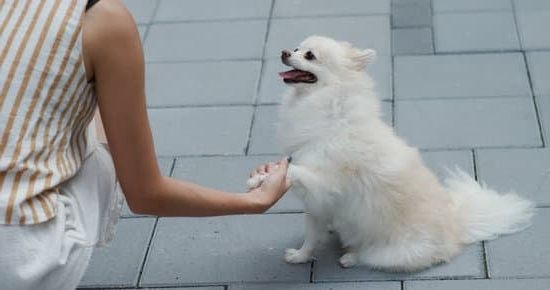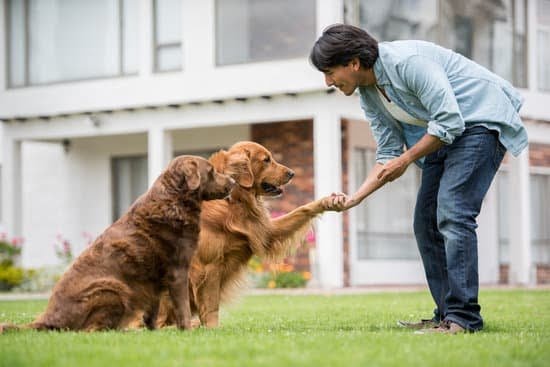Are you constantly asking yourself, “Why is my dog not toilet trained?” It can be incredibly frustrating dealing with a dog that isn’t housebroken. Not only does it result in a messy and smelly living environment, but it can also put a strain on your relationship with your furry friend. In this article, we will delve into the reasons behind why some dogs struggle with toilet training and explore effective strategies for successful housebreaking.
Understanding the importance of toilet training for dogs is crucial for both the pet and their owner. A well-trained dog not only contributes to a cleaner and more pleasant home environment but also exhibits good behavior and obedience. Additionally, proper toilet training is essential for the overall well-being and hygiene of the dog.
There are various reasons why dogs may not be toilet trained, ranging from behavioral issues to underlying health concerns. It’s important to identify these factors in order to address them effectively. By gaining insight into the common obstacles that impede successful toilet training, pet owners can implement the appropriate strategies to help their canine companions become fully housebroken.
Understanding the Importance of Toilet Training for Dogs
Toilet training is an essential aspect of raising a well-behaved and healthy dog. It not only helps prevent messes in the house but also promotes good hygiene and prevents the spread of diseases. When a dog is not toilet trained, it can be frustrating for both the owner and the pet. However, understanding the importance of toilet training can help owners stay patient and committed to the process.
Toilet training teaches dogs about appropriate elimination behavior, whether it’s in a designated outdoor area or using indoor pee pads. This training also helps establish a routine for dogs, which contributes to their overall well-being. For example, regular bathroom breaks can prevent discomfort from holding in urine or feces for long periods.
Moreover, proper toilet training can strengthen the bond between a dog and its owner. When a dog successfully learns where and when to relieve itself, it fosters a sense of trust and communication with its owner. This also leads to a happier coexistence between pets and their human companions.
| Importance of Toilet Training | Benefits |
|---|---|
| Promotes good hygiene | Prevents messes in the house |
| Establishes routine for dogs | Strengthens bond between dog and owner |
| Prevents discomfort from holding urine/feces | Promotes happier coexistence with pets |
Common Reasons Why Dogs Are Not Toilet Trained
Toilet training a dog can be a frustrating experience for many pet owners. Common reasons why dogs are not toilet trained can vary from behavioral issues, health problems, to lack of proper training and consistency. Understanding these reasons is crucial in addressing the problem and effectively toilet training your furry friend.
One common reason why dogs are not toilet trained is due to inadequate or inconsistent training from the owner. Dogs thrive on routine and structure, so inconsistency in their toilet training can lead to confusion and accidents inside the house. Additionally, punishing a dog for accidents instead of positively reinforcing good behavior can also hinder the toilet training process.
Another reason why dogs may struggle with toilet training is due to behavioral issues such as anxiety or fear. Some dogs may feel stressed or anxious about using the bathroom in certain areas or environments, leading them to hold it in until they find a more suitable location. Understanding your dog’s behavior and providing a safe and comfortable environment for them to relieve themselves is essential in successful toilet training.
Furthermore, health issues can also play a significant role in a dog’s ability to be toilet trained. Medical conditions such as urinary tract infections, gastrointestinal problems, or mobility issues can cause a dog to have accidents inside the house. It’s important for pet owners to rule out any underlying health concerns with their veterinarian if their dog is consistently struggling with toilet training.
| Reasons Why Dogs Are Not Toilet Trained | Example |
|---|---|
| Inconsistent Training | Punishing the dog for accidents instead of positive reinforcement |
| Behavioral Issues | Anxiety or fear related to bathroom environment |
| Health Problems | Urinary tract infections, gastrointestinal issues, mobility problems |
Behavioral Issues That Affect Toilet Training
One of the most frustrating aspects of having a pet dog is dealing with untrained behavior, particularly when it comes to toilet training. Many dog owners struggle with this issue and may feel at a loss when their efforts to train their furry friend seem to be unsuccessful. While there can be various reasons why a dog is not toilet trained, one potential factor that can significantly impact this process is behavioral issues.
Fear or Anxiety
Some dogs may have fear or anxiety associated with certain environments or situations, which can make them hesitant to relieve themselves in the appropriate place. For example, a rescue dog may have past experiences that have led to fear of using the bathroom outdoors. Understanding and addressing these underlying anxieties is crucial in helping the dog become more comfortable with toilet training.
Lack of Routine
Another common behavioral issue that affects toilet training is the lack of a consistent routine. Dogs thrive on routine and structure, so if their daily schedule is unpredictable or chaotic, they may struggle to understand when and where they are supposed to go potty. Establishing a regular feeding schedule and consistent bathroom breaks can help address this issue.
Marking Behavior
Some dogs, especially unneutered males, may engage in marking behavior as a way of establishing territory or communicating with other animals. This can interfere with toilet training as the dog may view urinating indoors as a way of asserting dominance. Neutering can help reduce this behavior, but it’s important to also provide positive reinforcement for going potty in the appropriate place.
Understanding and addressing these behavioral issues is essential for successful toilet training. By recognizing the specific challenges that your dog may be facing, you can tailor your training approach accordingly and work towards achieving the desired results.
Health Issues That May Affect a Dog’s Ability to Be Toilet Trained
When it comes to toilet training your dog, it’s essential to consider the possibility of underlying health issues that may be affecting their ability to be toilet trained. Understanding these potential health issues can help you address the problem effectively and ensure your dog’s well-being.
Here are some common health issues that may affect a dog’s ability to be toilet trained:
1. Urinary Tract Infections (UTIs): UTIs can make it difficult for dogs to control their bladder, leading to accidents in the house. Look out for symptoms such as frequent urination, straining to urinate, and blood in the urine.
2. Digestive Disorders: Dogs with digestive disorders such as diarrhea or inflammatory bowel disease may struggle with maintaining bowel control, making it challenging for them to be toilet trained.
3. Diabetes: Diabetes in dogs can lead to increased thirst and urination, causing them to have more frequent accidents indoors.
It’s important to consult with a veterinarian if you suspect that your dog’s inability to be toilet trained is due to an underlying health issue. Addressing any health concerns first is crucial before implementing any training techniques. With proper medical attention and care, you can help your dog overcome these health issues and improve their ability to be successfully toilet trained.
Tips and Techniques for Successful Toilet Training
Establish a Routine
One effective method for toilet training your dog is to establish a routine. By taking your dog outside at the same times each day, such as after meals, upon waking up in the morning, and before bedtime, you can help them develop a regular elimination schedule. Consistency is key in reinforcing this routine, so make sure to stick to it every day.
Positive Reinforcement
Using positive reinforcement is crucial in toilet training your dog. Whenever they eliminate in the designated spot outside, be sure to praise them and offer a small treat as a reward. This will help your dog associate going potty outdoors with positive experiences and encourage them to repeat this behavior.
Supervise Your Dog
During the toilet training process, it’s important to closely supervise your dog, especially when they are indoors. Keep an eye on their behavior for signs that they need to go outside, such as circling or sniffing around. If you notice these signs, immediately take them out to their designated potty area.
By implementing these tips and techniques, along with patience and consistency, you can effectively toilet train your dog and avoid accidents indoors. Remember that every dog learns at their own pace, so it’s essential to remain patient throughout the process. With time and effort, your dog will become successfully toilet trained, leading to a happier and more harmonious relationship between you and your pet.
Consistency and Patience
When it comes to toilet training your dog, consistency and patience are crucial factors for success. Dogs thrive on routine and structure, so it’s important to establish a consistent schedule for bathroom breaks. This will help your dog understand when and where they are expected to do their business.
Additionally, patience is key as accidents are bound to happen during the training process. It’s essential to remain calm and avoid showing frustration, as this can negatively impact your dog’s progress.
To maintain consistency in toilet training your dog, consider the following tips:
- Establish a regular feeding schedule: By feeding your dog at the same times each day, you can predict when they will need to go outside to relieve themselves.
- Take your dog outside frequently: Especially after meals, upon waking up in the morning, and before bedtime.
- Use verbal cues: When taking your dog outside, use a specific command or phrase such as “go potty” to indicate that it’s time for them to eliminate.
In addition to consistency, patience is equally important in toilet training. Understand that accidents are a normal part of the process and refrain from punishing your dog for making mistakes. Instead, focus on positive reinforcement by rewarding them with praise or treats when they successfully go potty outside. With time and dedication, your dog will eventually learn where it’s appropriate to go to the bathroom.
Seeking Professional Help for Persistent Toilet Training Issues
For some dog owners, the task of toilet training their pet can become quite challenging. Despite consistent efforts and patience, there are cases where a dog simply does not respond to traditional training methods. In such situations, seeking professional help from a certified dog trainer or animal behaviorist may be necessary. These professionals have the skills and knowledge to identify underlying issues that may be causing the lack of progress in toilet training.
Professional trainers and behaviorists are trained to assess a dog’s behavior and can provide expert guidance on how to address specific issues that are hindering successful toilet training. They can create tailored training plans based on the individual needs of the dog, taking into consideration factors such as breed, age, and any existing health or behavioral issues. Their expertise can make a significant difference in overcoming toilet training hurdles that owners may struggle with on their own.
In addition to addressing the immediate concerns related to toilet training, seeking professional help can also lead to a better understanding of a dog’s overall behavior and well-being. By working with an experienced professional, dog owners can gain valuable insights into their pet’s temperament, triggers for accidents, and strategies for building a stronger bond with their canine companion.
Ultimately, seeking professional help for persistent toilet training issues can result in long-term benefits for both the dog and its owner.
Conclusion
In conclusion, the frustration of dealing with an untrained dog can be overwhelming, but it’s important to understand the significance of toilet training for dogs. There are several common reasons why dogs may not be toilet trained, including behavioral issues and health problems. However, with patience, consistency, and the right techniques, successful toilet training is achievable.
It’s crucial for dog owners to recognize that toilet training takes time and effort, but the rewards of having a well-trained dog are worth it. A dog that is properly toilet trained makes for a happier household and a stronger bond between owner and pet. By seeking professional help for persistent toilet training issues, owners can effectively address any underlying problems and work towards successful training outcomes.
Ultimately, achieving a well-trained dog requires dedication and commitment from the owner. The valuable benefits of having a well-trained dog extend beyond just proper toileting habits – it also contributes to better behavior overall. With love, patience, and a good understanding of their pet’s needs, any dog owner can successfully achieve positive outcomes in toilet training their beloved furry friend.

Welcome to the blog! I am a professional dog trainer and have been working with dogs for many years. In this blog, I will be discussing various topics related to dog training, including tips, tricks, and advice. I hope you find this information helpful and informative. Thanks for reading!





